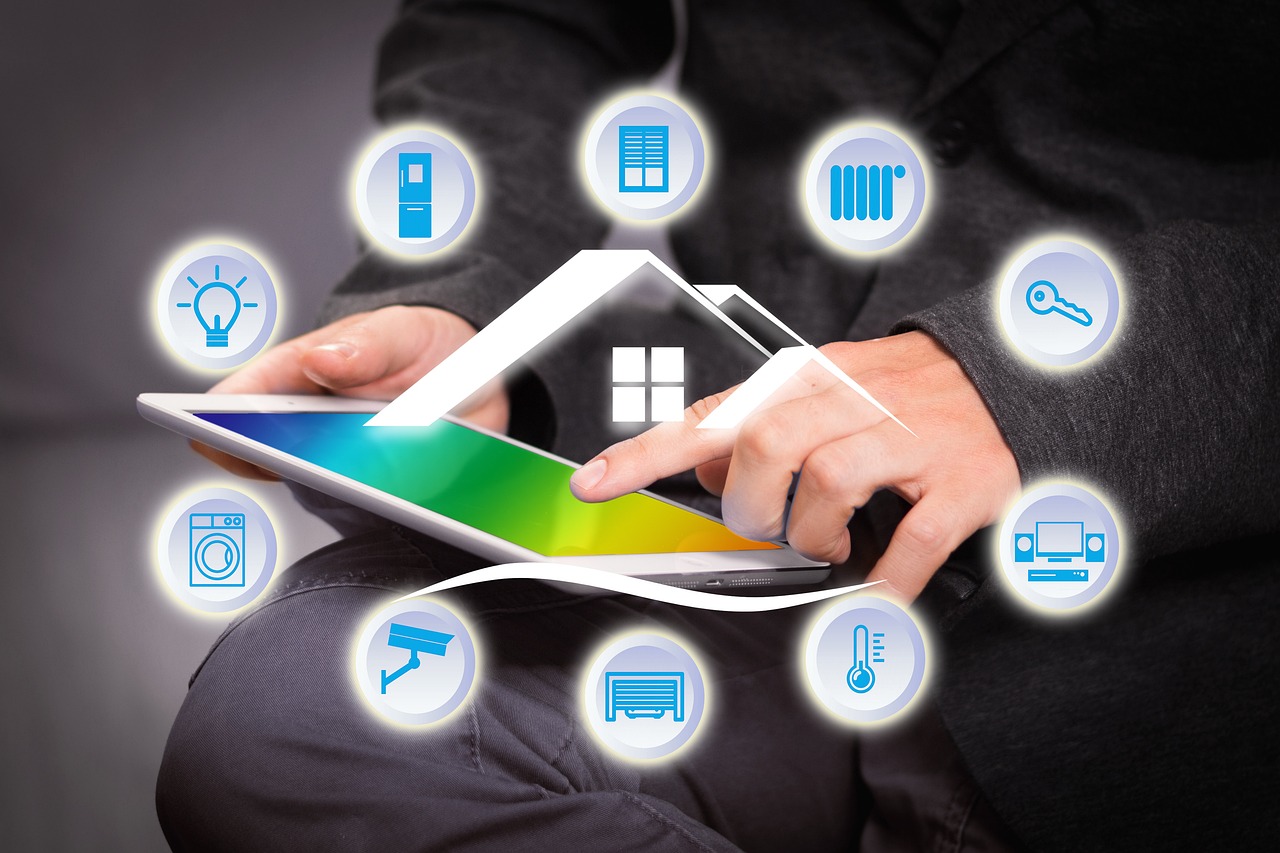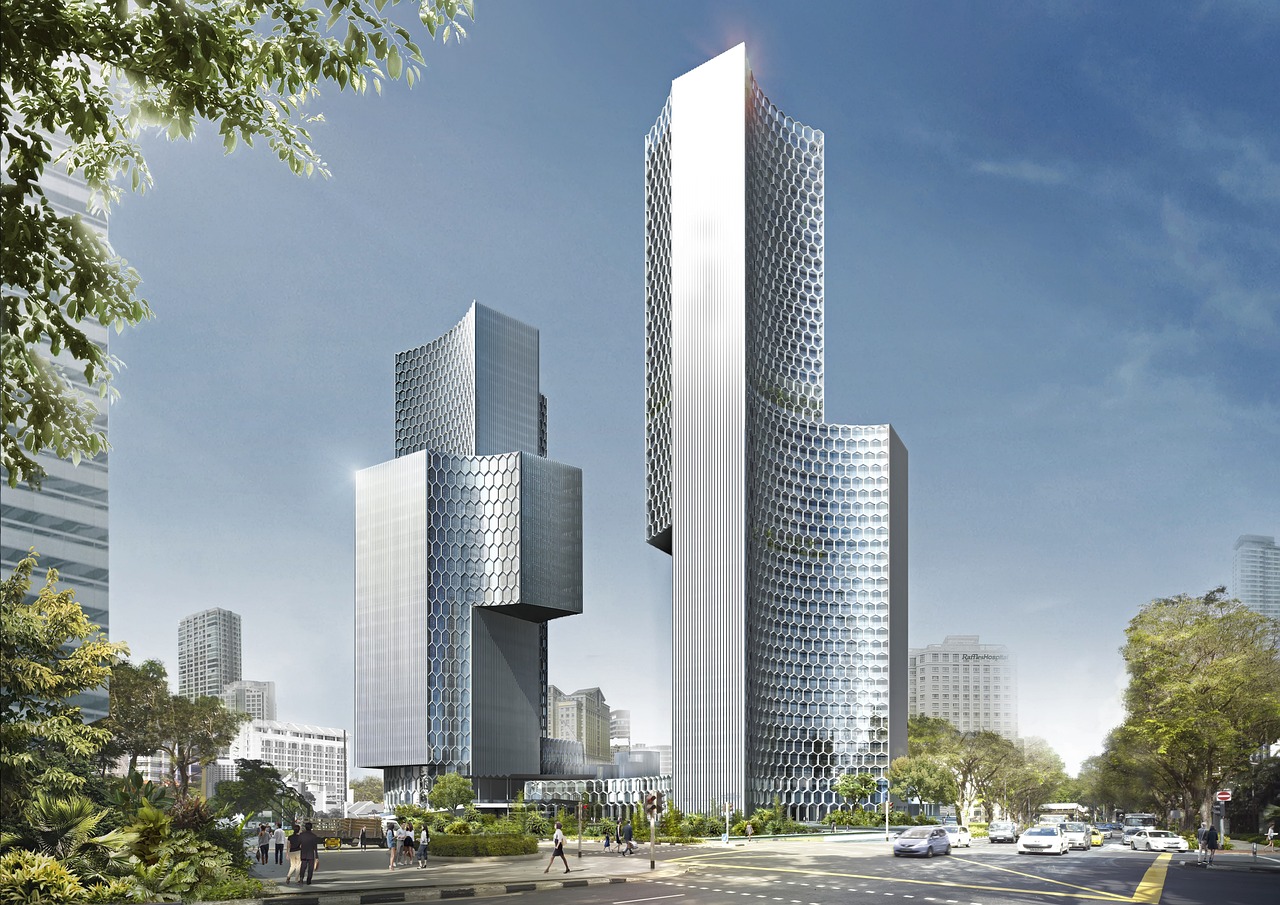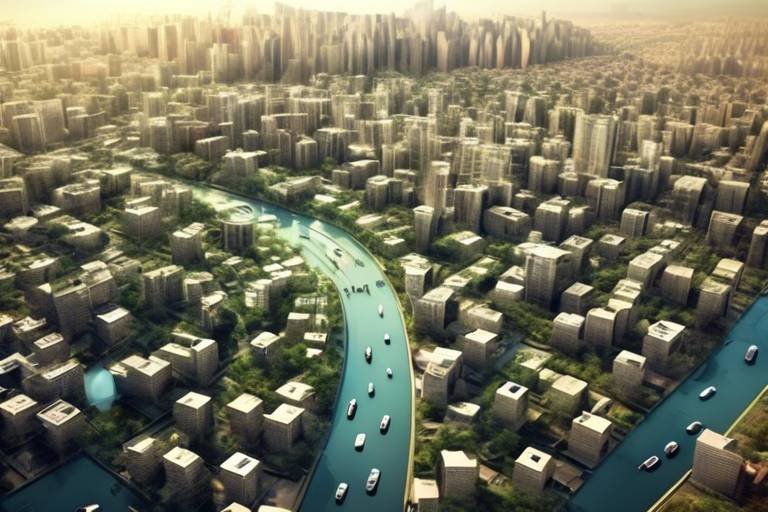How Smart Cities are Shaping Future Living
Imagine waking up in a city where everything around you is connected, efficient, and designed to enhance your quality of life. Welcome to the era of smart cities, where technology and urban living intertwine to create vibrant, sustainable environments. These cities are not just advanced; they are a glimpse into the future of urban living, reshaping how we interact with our surroundings and each other.
Smart cities leverage cutting-edge technologies to improve the daily lives of their residents. From intelligent traffic systems that reduce congestion to energy-efficient buildings that minimize environmental impact, the integration of smart solutions is revolutionizing urban landscapes. It's like upgrading from a flip phone to a smartphone; the difference is not just in functionality but in the overall experience of living.
As we dive deeper into the world of smart cities, we discover that they are built on three foundational pillars: technology integration, sustainability, and community engagement. Each of these elements plays a crucial role in enhancing urban life, making it more enjoyable and efficient. The ultimate goal? To create a living environment that is not only smart but also responsive to the needs of its inhabitants.
In essence, smart cities are about more than just technology; they are about creating a better world for everyone. They aim to foster a sense of community and belonging, where residents feel empowered to participate in shaping their environment. As we explore the transformative impact of smart cities, we will uncover how these innovations are paving the way for a sustainable and connected future.
So, what exactly makes a city "smart"? The answer lies in the seamless integration of various technologies that work together to enhance urban living. From data-driven decision-making to innovative transportation systems, smart cities are at the forefront of urban innovation. It's a thrilling time to witness how these changes are unfolding, and they promise to redefine our understanding of city life.
Technology is the backbone of smart cities, enabling efficient resource management, improved public services, and enhanced connectivity. This section delves into key technologies driving urban innovation.
Sustainable practices are crucial for smart cities, focusing on reducing carbon footprints and conserving resources. Here, we discuss various initiatives aimed at promoting environmental sustainability in urban areas.
Renewable energy sources, such as solar and wind, play a vital role in smart cities. This part examines how cities are integrating these technologies to achieve energy independence and sustainability.
Energy-efficient buildings are essential for reducing urban energy consumption. We explore innovative architectural designs and technologies that contribute to smarter, greener living spaces.
Transportation is a critical aspect of urban life. This section highlights smart transportation solutions like electric vehicles and intelligent traffic management systems that enhance mobility and reduce congestion.
Data analytics is pivotal in smart city development, enabling informed decision-making. This subsection discusses how cities use data to improve services and enhance citizen engagement.
Community involvement is essential for the success of smart city initiatives. This section explores strategies for fostering citizen participation and collaboration in urban planning.
Effective feedback mechanisms allow residents to voice their opinions and concerns. We examine various platforms that facilitate communication between citizens and city officials.
Collaborations between public and private sectors are vital for smart city projects. This part analyzes successful partnerships that drive innovation and resource sharing in urban development.
- What is a smart city? A smart city uses technology to enhance performance, reduce costs, and improve the quality of life for its residents.
- How do smart cities promote sustainability? They implement renewable energy solutions, energy-efficient buildings, and smart transportation systems to minimize environmental impact.
- What role does community engagement play in smart cities? Community engagement ensures that residents are involved in decision-making processes, fostering a sense of ownership and collaboration.
- What technologies are commonly used in smart cities? Technologies such as IoT, big data analytics, and AI are commonly used to drive innovations in smart cities.

The Role of Technology in Smart Cities
When we think about the cities of the future, it’s hard not to picture a world where technology reigns supreme, seamlessly integrating into our daily lives. Technology is the backbone of smart cities, enabling efficient resource management, improved public services, and enhanced connectivity. Imagine stepping out of your home and being greeted by a city that knows your preferences, from the coffee shop you love to the best route to avoid traffic. Sounds like a sci-fi movie, right? But this is becoming our reality.
At the heart of this transformation are key technologies that are driving urban innovation. For instance, the Internet of Things (IoT) connects various devices and systems, allowing them to communicate and share data. This means everything from smart streetlights that adjust their brightness based on pedestrian traffic to waste bins that signal when they need to be emptied. Isn't that fascinating? This kind of connectivity not only enhances the efficiency of city services but also improves the overall quality of life for residents.
Moreover, data analytics plays a crucial role in understanding urban dynamics. Cities can collect vast amounts of data from various sources, including traffic patterns, energy consumption, and even social media trends. By analyzing this data, city planners can make informed decisions that cater to the needs of the community. For example, if data shows that a particular area experiences heavy traffic during rush hours, city officials can implement measures to alleviate congestion, such as optimizing traffic light timings or introducing new public transport routes.
Let’s not forget about smart grids. These advanced energy systems allow for more efficient distribution and consumption of energy. By integrating renewable energy sources and utilizing real-time data, smart grids can help reduce energy waste and lower costs for residents. Imagine a world where your home’s energy consumption is optimized based on real-time pricing and availability of renewable energy. It’s not just a dream; it’s happening in smart cities around the globe.
In addition to these technologies, artificial intelligence (AI) is making waves in urban planning and management. AI can analyze complex datasets to predict future trends and help city officials plan accordingly. For example, AI algorithms can forecast population growth in certain areas, allowing cities to proactively develop infrastructure and services to meet the upcoming demand.
In conclusion, technology is not just an accessory in smart cities; it’s a fundamental element that shapes every aspect of urban living. From enhancing public services to fostering community engagement, the integration of technology is paving the way for a more efficient, sustainable, and connected urban environment. As we continue to embrace these innovations, the cities of tomorrow will undoubtedly be smarter, greener, and more responsive to the needs of their inhabitants.
- What is a smart city? A smart city uses technology and data to improve the quality of life for its residents, enhance urban services, and promote sustainability.
- How does technology improve public services in smart cities? Technology enhances public services by enabling efficient resource management, real-time data analysis, and improved communication between residents and city officials.
- What role does data play in smart cities? Data is crucial for informed decision-making, helping city planners understand trends, optimize services, and enhance citizen engagement.

Sustainability Initiatives in Smart Cities
In an era where climate change looms large over our cities, the concept of smart cities emerges as a beacon of hope. These urban environments are not just about integrating technology; they are fundamentally about creating a sustainable future for their residents. Imagine a city where the air is cleaner, the energy is renewable, and resources are used wisely. This isn't just a dream—it's the vision driving sustainability initiatives in smart cities. By leveraging innovative technologies and sustainable practices, cities are transforming into eco-friendly havens.
One of the most significant aspects of sustainability in smart cities is the focus on reducing carbon footprints. This means implementing initiatives that not only conserve energy but also promote the use of renewable resources. For instance, many cities are investing heavily in solar and wind energy. These renewable sources are being integrated into the urban infrastructure, enabling cities to power homes and businesses without depleting the planet's resources. It's like giving the Earth a much-needed breather while ensuring that the lights stay on.
Moreover, smart cities are redefining urban living through energy-efficient buildings. These structures are designed to minimize energy consumption while maximizing comfort and usability. Think of them as the *smartphones* of architecture—sleek, efficient, and packed with features that make life easier. From advanced insulation to smart thermostats, these buildings are equipped with technologies that monitor and adjust energy use in real-time. As a result, they not only save on energy bills but also contribute to a significant reduction in greenhouse gas emissions.
Another critical component of sustainability initiatives is the development of smart transportation systems. Urban mobility is often a major contributor to pollution and congestion. However, smart cities are tackling this issue head-on. By promoting electric vehicles (EVs) and implementing intelligent traffic management systems, cities are enhancing mobility while reducing their environmental impact. Imagine a city where traffic signals communicate with vehicles to optimize flow, reducing idling time and emissions. This is not science fiction—it’s the reality of smart transportation.
To further illustrate the impact of these initiatives, consider the following table showcasing the benefits of renewable energy adoption in smart cities:
| Renewable Energy Source | Benefits |
|---|---|
| Solar Energy |
|
| Wind Energy |
|
In addition to these initiatives, data-driven decision-making plays a crucial role in ensuring that sustainability efforts are effective and targeted. Cities are utilizing data analytics to monitor energy consumption patterns, track pollution levels, and assess the effectiveness of sustainability programs. This data not only helps in making informed decisions but also fosters transparency and accountability within the community. Residents can see the tangible results of their city's efforts, which encourages further engagement and participation.
Ultimately, the sustainability initiatives in smart cities are about more than just technology; they are about creating a livable, vibrant, and resilient urban environment. By prioritizing eco-friendly practices and fostering community involvement, smart cities are paving the way for a sustainable future where both people and the planet can thrive. So, the next time you think about urban living, picture a smart city that not only meets your needs but does so in harmony with nature.
- What is a smart city? A smart city uses technology and data to enhance the quality of life for its residents, focusing on sustainability, efficiency, and innovation.
- How do smart cities contribute to sustainability? Smart cities implement initiatives like renewable energy, energy-efficient buildings, and smart transportation to reduce their environmental impact.
- What role does community engagement play in smart cities? Community engagement is crucial for the success of smart city initiatives, as it encourages citizen participation and collaboration in urban planning.

Renewable Energy Solutions
In the quest for a more sustainable future, are taking center stage in the development of smart cities. These cities are harnessing the power of nature, utilizing resources like solar, wind, and hydroelectric energy to create cleaner, greener environments. Imagine walking through a city where the energy powering your home is generated by the sun shining above you or the wind breezing through the streets. This is not just a dream; it’s becoming a reality in urban spaces around the globe.
One of the most exciting aspects of renewable energy in smart cities is the integration of solar panels into building designs. Many modern buildings are now equipped with solar rooftops that not only reduce energy costs but also contribute surplus energy back to the grid. This creates a symbiotic relationship between the buildings and the city’s energy infrastructure. For instance, cities like San Diego and Amsterdam have implemented extensive solar programs, allowing residents to become active participants in energy production.
Wind energy is another game-changer. Urban areas, often thought to be unsuitable for wind turbines, are now seeing the installation of vertical-axis wind turbines on rooftops and in open spaces. These turbines are designed to be quieter and more efficient in urban settings, thus minimizing the visual and auditory impact on residents. Cities like Chicago have adopted this technology, showcasing how innovation can thrive even in densely populated areas.
Moreover, the concept of energy independence is being realized through the establishment of microgrids. These localized energy grids can operate independently or in conjunction with the main grid, providing a reliable energy source during outages or peak demand. Cities such as New York and Los Angeles are exploring microgrid solutions that incorporate renewable sources, ensuring that they are not solely reliant on traditional energy providers.
To further illustrate the impact of renewable energy solutions, consider the following table that highlights some key benefits:
| Benefit | Description |
|---|---|
| Reduced Carbon Footprint | Utilizing renewable resources significantly lowers greenhouse gas emissions. |
| Energy Security | Renewable energy reduces dependence on imported fuels, enhancing national security. |
| Job Creation | Investing in renewable energy creates new jobs in manufacturing, installation, and maintenance. |
| Cost Savings | Long-term savings on energy bills due to low operational costs of renewable technologies. |
In conclusion, renewable energy solutions are not just a trend; they are a vital component of the smart city ecosystem. By embracing these technologies, urban areas can lead the way towards a sustainable future, where energy is not just consumed but is generated responsibly and innovatively. As we continue to push the boundaries of what’s possible, let’s remember that the future of urban living lies in our ability to adapt and innovate.
- What are renewable energy solutions?
Renewable energy solutions refer to energy generated from natural resources that are replenished over time, such as solar, wind, and hydroelectric power.
- How do renewable energy solutions impact smart cities?
They enhance sustainability, reduce carbon footprints, and contribute to energy independence, making urban areas more resilient and environmentally friendly.
- What are some examples of renewable energy technologies used in smart cities?
Examples include solar panels, wind turbines, and energy-efficient buildings that utilize these technologies for power generation.

Energy-efficient Buildings
In the quest for creating smart cities, are not just a trend; they are a necessity. These structures are designed to minimize energy consumption while maximizing comfort and functionality. Imagine living in a space where the temperature is always just right, and your utility bills are significantly lower. Sounds appealing, right? Energy-efficient buildings achieve this through a combination of innovative design, sustainable materials, and cutting-edge technology.
One of the key elements of energy-efficient buildings is their insulation. Proper insulation helps maintain a stable indoor temperature, reducing the need for heating in the winter and cooling in the summer. This not only conserves energy but also enhances the overall comfort of the occupants. Additionally, these buildings often incorporate high-performance windows that minimize heat loss and gain, further contributing to energy savings.
Moreover, the integration of smart technology plays a vital role in optimizing energy use. For instance, smart thermostats can learn the habits of residents and adjust heating and cooling systems accordingly. This means that energy is used only when necessary, which is a win-win for both the environment and the homeowner's wallet.
Another fascinating aspect is the use of renewable energy sources. Many energy-efficient buildings are equipped with solar panels or wind turbines, allowing them to generate their own electricity. This not only reduces reliance on fossil fuels but also contributes to the city’s overall sustainability goals. The table below illustrates some of the common features of energy-efficient buildings:
| Feature | Description |
|---|---|
| Insulation | High-quality materials that prevent heat transfer. |
| Smart Technology | Systems that optimize energy use based on real-time data. |
| Renewable Energy | Integration of solar panels or wind turbines for self-sufficiency. |
| Water Efficiency | Systems designed to reduce water usage, such as low-flow fixtures. |
Not to be overlooked, energy-efficient buildings also focus on water conservation. Utilizing rainwater harvesting systems and low-flow fixtures can significantly reduce water consumption, making these buildings not only energy-efficient but also water-efficient. This holistic approach to resource management is what makes smart cities truly smart.
As we look to the future, the importance of energy-efficient buildings cannot be overstated. They represent a shift towards a more sustainable way of living, where our homes and workplaces work in harmony with the environment. By investing in energy-efficient designs and technologies, cities can pave the way for a greener, more resilient future.
- What are energy-efficient buildings? Energy-efficient buildings are designed to use less energy for heating, cooling, and lighting while providing a comfortable living environment.
- How do smart technologies contribute to energy efficiency? Smart technologies, such as smart thermostats and energy management systems, help optimize energy use based on the occupants' habits.
- What are some benefits of energy-efficient buildings? Benefits include lower energy bills, increased comfort, reduced environmental impact, and improved property value.
- Can existing buildings be retrofitted to be more energy-efficient? Yes, many existing buildings can be upgraded with insulation, energy-efficient windows, and smart technologies to improve their energy performance.

Smart Transportation Systems
When we think about the hustle and bustle of urban life, one of the first things that come to mind is transportation. Imagine a city where traffic jams are a thing of the past, where your commute is not just a necessity but a pleasant experience. This is the promise of , a crucial component of smart cities that aims to revolutionize how we move through our urban landscapes.
At the heart of these systems lies a blend of cutting-edge technologies designed to enhance mobility and reduce congestion. For instance, cities are increasingly adopting intelligent traffic management systems that use real-time data to optimize traffic flow. By employing sensors and cameras, these systems can monitor traffic patterns and adjust signal timings accordingly, ensuring that vehicles move smoothly and efficiently. Picture this: you’re driving home after a long day, and instead of hitting red light after red light, you glide through intersections with ease. That’s the magic of smart traffic management!
Moreover, the integration of electric vehicles (EVs) into public transportation is another exciting development. Cities are investing in electric buses and taxis that not only reduce emissions but also lower operating costs. Imagine hopping onto an electric bus that’s powered by renewable energy, contributing to a cleaner environment while you travel. It’s a win-win situation for both the residents and the planet!
But it doesn’t stop there. Smart transportation systems also encompass the use of mobility-as-a-service (MaaS) platforms, which consolidate various transportation options into a single accessible service. Think of it as your personal travel assistant that helps you plan your journey using public transport, bike-sharing, ride-hailing, and more, all in one app. This seamless integration encourages residents to opt for public transport over personal vehicles, further alleviating traffic congestion and reducing carbon footprints.
To illustrate the impact of smart transportation systems, let’s take a look at a table that highlights some key features and benefits:
| Feature | Benefit |
|---|---|
| Real-time Traffic Monitoring | Reduces congestion and improves travel times |
| Electric Public Transport | Decreases emissions and operational costs |
| Mobility-as-a-Service Platforms | Enhances convenience and encourages public transport usage |
| Smart Parking Solutions | Minimizes time spent searching for parking spots |
In addition to these features, smart transportation systems also promote shared mobility. Car-sharing and bike-sharing programs are becoming increasingly popular in urban areas, allowing residents to access vehicles or bicycles without the burden of ownership. By sharing resources, cities can reduce the number of cars on the road, which leads to less pollution and a more sustainable urban environment.
As we look towards the future, it’s clear that smart transportation systems will play a pivotal role in shaping our urban experiences. They promise not only to make our daily commutes easier but also to foster a more sustainable and connected community. So, the next time you find yourself stuck in traffic, just remember—there’s a smarter way to get around, and it’s just around the corner!
- What are smart transportation systems? Smart transportation systems use technology to improve the efficiency and effectiveness of urban mobility, including traffic management, public transport, and shared mobility.
- How do smart transportation systems reduce traffic congestion? By utilizing real-time data to optimize traffic flow and manage traffic signals, these systems can significantly reduce delays and improve travel times.
- What role do electric vehicles play in smart transportation? Electric vehicles help decrease emissions and lower transportation costs, making them a key component of sustainable urban mobility.
- What is mobility-as-a-service (MaaS)? MaaS is a service model that integrates various transportation options into a single platform, allowing users to plan and pay for their journeys conveniently.

Data-Driven Decision Making
In the age of information, has become a cornerstone for the development of smart cities. Imagine a city where every light, every traffic signal, and even the waste collection system is optimized based on real-time data. This isn’t just a dream; it’s the reality that many urban areas are striving to achieve. By harnessing the power of data analytics, city planners and officials can make informed choices that enhance the quality of life for residents while ensuring efficient resource management.
At the heart of this approach lies the collection and analysis of data from various sources. Sensors embedded throughout the city gather information on everything from air quality to traffic patterns. For instance, smart traffic lights can adjust their timing based on the flow of vehicles, reducing congestion and improving travel times. Similarly, waste management systems can monitor bin levels and optimize collection routes, saving both time and fuel. This integration of technology not only streamlines processes but also contributes to a more sustainable urban environment.
Moreover, data-driven decision making fosters transparency and accountability. When city officials base their decisions on concrete data rather than assumptions, residents can trust that their leaders are making choices that truly benefit the community. This transparency can be further enhanced through public dashboards that display real-time data on city operations, allowing citizens to see how their feedback is being utilized and how their city is performing.
To illustrate the impact of data-driven strategies, let’s consider a few key areas where cities are leveraging data:
| Area | Data Utilization | Benefits |
|---|---|---|
| Traffic Management | Real-time traffic data from sensors | Reduced congestion, improved travel times |
| Energy Consumption | Smart meters tracking usage patterns | Informed energy-saving initiatives |
| Public Safety | Crime statistics and emergency response data | Enhanced safety measures and quicker response times |
As cities continue to evolve, the reliance on data will only grow. The ability to analyze and interpret vast amounts of information empowers city officials to not only react to current challenges but also to anticipate future needs. This proactive approach leads to better urban planning and the creation of spaces that truly reflect the desires and needs of the community.
However, it’s essential to remember that data-driven decision making is not just about technology; it’s also about people. Engaging the community in the data collection process can lead to richer insights and more tailored solutions. For example, using mobile applications, residents can report issues such as potholes or broken streetlights, providing valuable data that can be analyzed and addressed swiftly. This kind of citizen engagement ensures that the data collected is relevant and actionable.
In conclusion, data-driven decision making is revolutionizing the way cities operate. By leveraging technology and engaging with residents, smart cities are transforming into dynamic environments that prioritize efficiency, sustainability, and community well-being. As we look to the future, it’s clear that the integration of data into urban planning will play a pivotal role in shaping the cities of tomorrow.
- What is a smart city? A smart city uses technology and data to improve the quality of life for its residents, enhance sustainability, and streamline urban services.
- How does data-driven decision making benefit cities? It allows for informed choices based on real-time data, leading to improved efficiency, transparency, and responsiveness to community needs.
- What technologies are commonly used in smart cities? Common technologies include IoT sensors, data analytics platforms, renewable energy systems, and smart transportation solutions.

Community Engagement in Smart Cities
In the vibrant tapestry of urban life, community engagement serves as the thread that weaves together the aspirations, needs, and voices of residents in smart cities. Imagine a city where every resident feels not just like a number, but a vital part of a living, breathing organism. This is the essence of community engagement in smart cities—it's about fostering connections and ensuring that the digital innovations we implement are in harmony with the real-world experiences of the people who live there.
At the heart of effective community engagement lies the need for transparent communication. When city officials and residents communicate openly, it creates a foundation of trust. Residents should feel empowered to voice their opinions and contribute to the decision-making processes that affect their lives. This can be achieved through various platforms, such as community forums, social media channels, and dedicated mobile applications. These tools enable a two-way dialogue, allowing citizens to provide feedback and engage directly with city planners and officials.
One innovative approach that many smart cities are adopting is the use of citizen feedback mechanisms. These mechanisms are designed to gather insights from residents on various urban issues, ranging from public safety to environmental concerns. For instance, cities can implement mobile apps that allow residents to report issues like potholes or broken streetlights in real-time. This not only helps in addressing immediate concerns but also fosters a sense of ownership among the residents. When individuals see their feedback leading to tangible changes, it cultivates a deeper connection to their community.
Moreover, the role of public-private partnerships cannot be overstated in the realm of smart city initiatives. Collaborations between the public sector and private enterprises can lead to innovative solutions that enhance community engagement. For example, tech companies can provide the tools and platforms necessary for effective communication, while local governments can ensure that these tools are accessible to all residents. This synergy not only drives innovation but also promotes resource sharing and collective problem-solving, making the city a more inclusive place for everyone.
To illustrate the impact of community engagement, consider the following table that outlines some successful initiatives from various smart cities:
| City | Initiative | Description |
|---|---|---|
| Barcelona | Participatory Budgeting | Residents vote on how to allocate a portion of the city budget to community projects. |
| San Francisco | SF311 | A mobile app that allows residents to report issues and access city services easily. |
| Amsterdam | Smart Citizen Platform | A community-driven platform that encourages residents to share data and insights about their neighborhood. |
As we look to the future, it’s clear that community engagement will play a pivotal role in shaping the success of smart cities. By actively involving residents in the planning and decision-making processes, cities can create environments that are not only technologically advanced but also deeply rooted in the needs and desires of their communities. So, the next time you think about what makes a city 'smart', remember that it’s not just about the technology—it's about the people who live there and how they connect with one another and their environment.
- What is community engagement in smart cities? Community engagement in smart cities refers to the involvement of residents in the decision-making processes and initiatives that affect their urban environment.
- How can residents participate in community engagement? Residents can participate through platforms like community forums, social media, and mobile apps that facilitate feedback and communication with city officials.
- What are the benefits of community engagement? Benefits include increased trust between residents and officials, improved urban services, and a stronger sense of community ownership.
- What role do public-private partnerships play? Public-private partnerships foster collaboration that drives innovation and resource sharing, enhancing community engagement efforts.

Citizen Feedback Mechanisms
In the age of smart cities, play a crucial role in shaping urban environments that truly reflect the needs and desires of their residents. Imagine living in a city where your voice matters, where your concerns are not just heard but actively addressed. This is the promise of smart urban planning, and feedback mechanisms are the key that unlocks this potential. By leveraging technology, cities can create platforms that facilitate communication between residents and city officials, ensuring that everyone has a say in the development of their community.
One effective approach is the use of digital platforms that allow residents to report issues, suggest improvements, or provide feedback on city initiatives. For instance, mobile apps and websites can be designed to streamline this process, making it as easy as a few taps on a screen. These platforms not only empower citizens but also provide city officials with valuable data that can inform decision-making. Think of it as a two-way street: residents express their needs, and officials respond with actionable solutions.
Moreover, many cities are adopting social media as a tool for engagement. Platforms like Twitter and Facebook enable real-time interaction, allowing city officials to gauge public sentiment and respond promptly. This immediacy can help build trust between the government and its citizens, fostering a sense of community and shared responsibility. However, it’s essential to ensure that these platforms are accessible to everyone, including those who may not be tech-savvy.
To further enhance the effectiveness of these mechanisms, cities can implement surveys and polls that target specific issues or projects. These tools can gather quantitative data on resident opinions, providing a clearer picture of community priorities. For instance, a city might conduct a survey on public transportation needs, asking residents to rank their top concerns. The results can then guide investments and improvements in that area, ensuring that resources are allocated where they’re most needed.
Additionally, town hall meetings and community forums remain invaluable for fostering dialogue. These gatherings provide a platform for face-to-face interaction, allowing residents to engage directly with city officials. While digital tools are essential, the human element cannot be overlooked. In-person discussions can often lead to deeper understanding and collaboration, as residents feel more connected to their leaders and their community.
In summary, citizen feedback mechanisms are not just about collecting data; they are about creating a culture of participation and transparency. By embracing technology and fostering open communication, smart cities can ensure that every resident has a voice in shaping their urban landscape. As we move forward, the challenge lies in continually improving these mechanisms to make them more inclusive and effective, ultimately leading to a better quality of life for all.
Q: How can I give feedback about my city?
A: Many cities have dedicated apps or websites where residents can submit feedback. You can also attend town hall meetings or engage through social media platforms.
Q: Are citizen feedback mechanisms effective?
A: Yes! When implemented correctly, they can significantly improve communication between residents and city officials, leading to more responsive governance.
Q: What if I don’t have access to technology?
A: Cities often provide alternative ways to give feedback, such as in-person meetings or phone surveys. Check your local government’s website for details.

Public-Private Partnerships
Public-Private Partnerships (PPPs) are becoming the cornerstone of smart city development, acting as a bridge between governmental bodies and private enterprises. These collaborations are not just about sharing resources; they are about merging expertise, innovation, and financial investment to create urban environments that are not only efficient but also sustainable. Imagine a city where the government and private companies work hand-in-hand to address urban challenges—this is the reality that PPPs aim to achieve.
One of the most significant advantages of PPPs is their ability to leverage private sector innovation. While public entities often struggle with bureaucracy and limited budgets, private companies bring in cutting-edge technology and agile methodologies. For instance, a city may partner with a tech firm to implement smart traffic management systems that use real-time data to optimize traffic flow. This partnership not only enhances mobility but also reduces congestion and pollution, showcasing the mutual benefits of such collaborations.
Moreover, PPPs can significantly speed up project implementation. In traditional public projects, lengthy approval processes can delay critical infrastructure upgrades. However, when a private entity is involved, the project can often move forward more swiftly, as they bring in the necessary capital and expertise to navigate regulatory hurdles. This efficiency is crucial in a world where urban populations are rapidly growing and the demand for smart solutions is ever-increasing.
To illustrate the impact of PPPs, let’s take a look at a few successful examples:
| City | Partnership | Outcome |
|---|---|---|
| Barcelona | Telefónica | Smart lighting system reducing energy consumption by 30% |
| Los Angeles | IBM | Real-time traffic management system improving commute times |
| Singapore | Various tech firms | Smart waste management reducing operational costs |
However, it’s essential to approach these partnerships with a clear framework and defined objectives. Transparency and accountability must be prioritized to ensure that the interests of the public are safeguarded. This means establishing clear contracts that outline the roles and responsibilities of each party, as well as mechanisms for monitoring and evaluation. When done right, PPPs can lead to transformative changes in urban living, enhancing the quality of life for residents while fostering economic growth.
In conclusion, Public-Private Partnerships are not just a trend; they are a necessary evolution in urban planning. By combining the strengths of both sectors, cities can tackle complex challenges more effectively, paving the way for a smarter, more sustainable future. The synergy created through these partnerships can unleash innovation and drive progress, ultimately benefiting citizens and creating resilient urban ecosystems.
- What are Public-Private Partnerships? PPPs are collaborations between government entities and private companies aimed at delivering public services or infrastructure projects.
- How do PPPs benefit smart cities? They leverage private sector expertise and innovation, speeding up project implementation, and improving service delivery.
- Are there risks associated with PPPs? Yes, risks include potential misalignment of goals, lack of transparency, and dependency on private entities for essential services.
- Can residents participate in PPP projects? Absolutely! Community engagement is vital in ensuring that PPP projects meet the needs of the residents they serve.
Frequently Asked Questions
- What are smart cities?
Smart cities are urban areas that leverage technology and data to enhance the quality of life for residents. By integrating advanced technologies, these cities aim to improve public services, streamline resource management, and promote sustainability.
- How does technology impact smart cities?
Technology is the backbone of smart cities. It facilitates efficient resource management, enhances connectivity, and improves public services. Key technologies include IoT (Internet of Things) devices, data analytics, and smart infrastructure that work together to create a more livable urban environment.
- What sustainability initiatives are implemented in smart cities?
Sustainability is a core principle of smart cities. Initiatives often focus on reducing carbon footprints, conserving resources, and promoting renewable energy sources like solar and wind. These efforts help create a greener, healthier urban landscape for future generations.
- How do renewable energy solutions contribute to smart cities?
Renewable energy solutions play a vital role in smart cities by providing clean, sustainable power. Cities are increasingly integrating solar panels, wind turbines, and other renewable technologies to achieve energy independence and reduce reliance on fossil fuels.
- What are energy-efficient buildings?
Energy-efficient buildings are designed to minimize energy consumption while maximizing comfort and functionality. These structures often incorporate innovative architectural designs, smart technologies, and sustainable materials to create greener living spaces.
- What smart transportation systems are being developed?
Smart transportation systems include electric vehicles, intelligent traffic management, and public transit solutions that enhance mobility while reducing congestion. These systems utilize data and technology to optimize travel routes and improve overall transportation efficiency.
- How is data-driven decision-making used in smart cities?
Data-driven decision-making is essential for smart city development. Cities collect and analyze data from various sources to inform policies and improve services. This approach ensures that urban planning is responsive to the needs and preferences of residents.
- Why is community engagement important in smart cities?
Community engagement is crucial for the success of smart city initiatives. Involving citizens in urban planning fosters collaboration and ensures that projects reflect the needs and desires of the community, leading to more effective and accepted solutions.
- What are citizen feedback mechanisms?
Citizen feedback mechanisms are platforms that allow residents to voice their opinions and concerns about urban issues. These can include online surveys, mobile apps, and community forums that facilitate communication between citizens and city officials.
- How do public-private partnerships benefit smart cities?
Public-private partnerships (PPPs) are collaborations between government entities and private companies that drive innovation and resource sharing in urban development. These partnerships can lead to more efficient project execution and the pooling of expertise and resources for better outcomes.



















